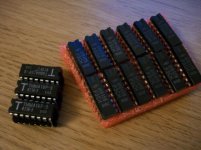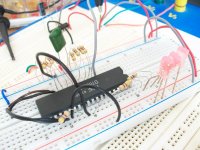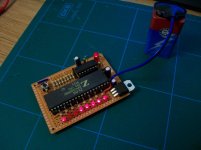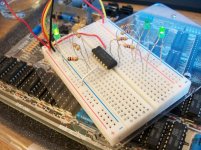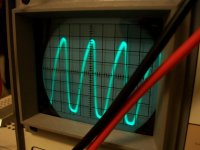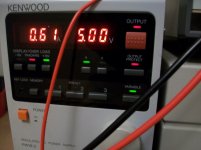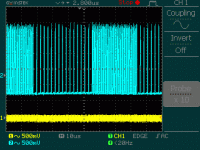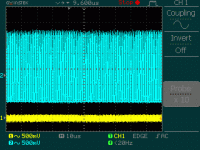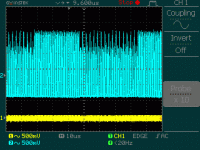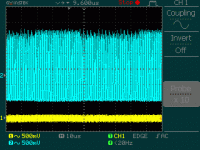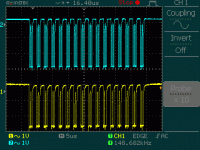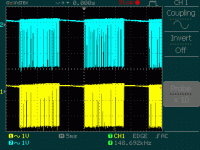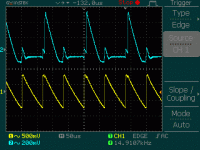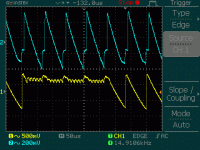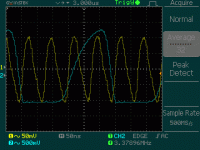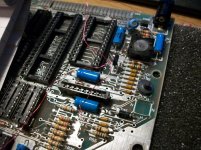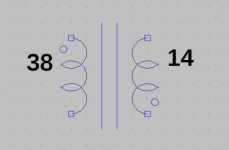ajcc
Experienced Member
Hi guys!,
A while back I saw a board with a Sinclair logo on a bare board, among a bunch of old PC-gear, and I decided right away that I had to have it! It was missing IC's, and I found out some parts are broken and PCB traces might be damaged. At least the Z80, the BASIC ROM and the Ferranti ULA is there, so if they are working... maybe there's still hope.
I was lucky to find the schematics for this Issue Two ZX with a lot of detailed notes at a blog called: L BREAK Into Program, 0:1 (http://wordpress.animatez.co.uk/computers/zx-spectrum/hardware/).
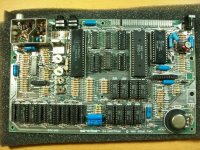

First, the missing IC's:
IC25: 74LS157 - Quad 2-Line to 1-Line Data Selector/Multiplexer
IC26: 74LS157
Both used for addressing the upper 32k of memory, each addressing 4-bits of the 8 address bits.
The lower memory is hooked directly to the ULA and a second set of 74LS157s to interface them to the common CPU bus.
IC23: 74LS32 - Quad 2-Input OR Gate
Used along IC24 (74LS00, Quad 2-Input NOR Gate) for DRAM, Column, Row and Read/Write access.
It's also missing 5 out of 8 lower DRAM ICs, D416C.
And the 7805 linear regulator.
There's a Cap (C35) and Diode (D13) cut off next to the tape in/out jacks.
Anyway, that's just the first look. While the missing 74-series logic could be replaced easily. The RAM might be harder?, I've never worked with DRAM, or any RAM outside uC's, before.
More as it happens!
A while back I saw a board with a Sinclair logo on a bare board, among a bunch of old PC-gear, and I decided right away that I had to have it! It was missing IC's, and I found out some parts are broken and PCB traces might be damaged. At least the Z80, the BASIC ROM and the Ferranti ULA is there, so if they are working... maybe there's still hope.
I was lucky to find the schematics for this Issue Two ZX with a lot of detailed notes at a blog called: L BREAK Into Program, 0:1 (http://wordpress.animatez.co.uk/computers/zx-spectrum/hardware/).


First, the missing IC's:
IC25: 74LS157 - Quad 2-Line to 1-Line Data Selector/Multiplexer
IC26: 74LS157
Both used for addressing the upper 32k of memory, each addressing 4-bits of the 8 address bits.
The lower memory is hooked directly to the ULA and a second set of 74LS157s to interface them to the common CPU bus.
IC23: 74LS32 - Quad 2-Input OR Gate
Used along IC24 (74LS00, Quad 2-Input NOR Gate) for DRAM, Column, Row and Read/Write access.
It's also missing 5 out of 8 lower DRAM ICs, D416C.
And the 7805 linear regulator.
There's a Cap (C35) and Diode (D13) cut off next to the tape in/out jacks.
Anyway, that's just the first look. While the missing 74-series logic could be replaced easily. The RAM might be harder?, I've never worked with DRAM, or any RAM outside uC's, before.
More as it happens!

